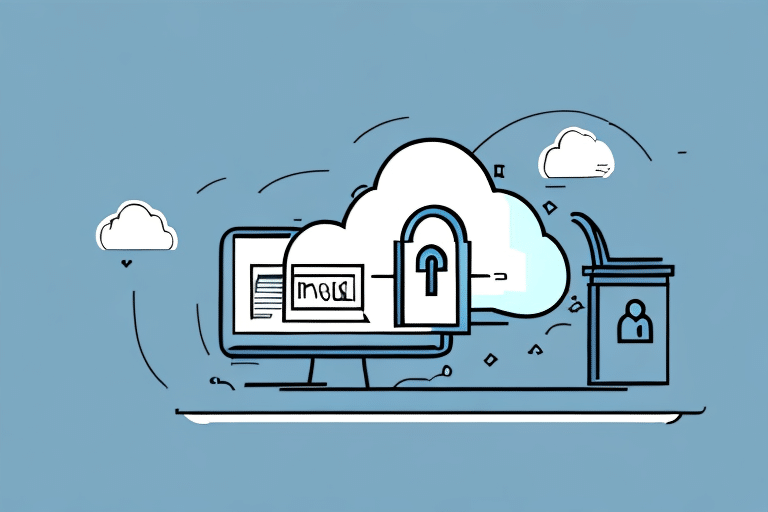Security Benefits of Cloud Desktops for Education
In recent years, education institutions have increasingly adopted cloud desktops as a solution to streamline their IT infrastructure. Cloud desktops offer several benefits for educational institutions, especially in terms of security. In this article, we will discuss the security benefits of cloud desktops for education.
Understanding Cloud Desktops in Education
Cloud desktops are a form of virtual desktops that offer computer resources as a service. They are hosted in the cloud rather than on traditional desktop hardware. When users log in, they are connected to a desktop instance with all their applications, settings, and data they need to work. Cloud desktops are accessible from any device with the internet, making them an attractive option for educational institutions with diverse user needs.
What are Cloud Desktops?
Put simply; a cloud desktop is a virtual computer. The user can interact with the machine through a web interface or a native application. The virtual computer runs in a data center on high-quality hardware and typically an enterprise-grade hypervisor to ensure optimal performance. The result is an environment that has the performance characteristics of a desktop but can be accessed from anywhere, on any device.
Cloud desktops are a great solution for educational institutions that require students and faculty to have access to their work and learning resources from anywhere, at any time. With cloud desktops, students can work on assignments and projects at home, in the library, or on the go. Faculty members can access course materials, grade assignments, and communicate with students, no matter where they are.
Cloud desktops offer a number of benefits over traditional desktops. For one, they are more flexible and scalable. With cloud desktops, educational institutions can easily add or remove resources as needed, without having to invest in new hardware or infrastructure. This makes it easier for institutions to adapt to changing needs and budgets.
The Role of Cloud Desktops in Educational Institutions
In educational institutions, cloud desktops can be used by students, faculty, and staff as a centralized resource for learning, research, and administrative tasks. They offer a consistent user experience for each user, regardless of their location or device, which improves productivity and communication. In addition, cloud desktops reduce IT infrastructure costs and management needs, allowing institutions to focus on education, rather than technology.
Cloud desktops also provide a secure environment for educational institutions. With cloud desktops, institutions can ensure that all data is stored and accessed securely, reducing the risk of data breaches and other security threats. This is especially important for institutions that deal with sensitive student and faculty information, such as grades, financial aid, and personal data.
Another benefit of cloud desktops is that they are environmentally friendly. By using cloud desktops, educational institutions can reduce their carbon footprint and energy consumption. This is because cloud desktops require less energy to operate than traditional desktops, which can help institutions save money on energy costs and reduce their impact on the environment.
In conclusion, cloud desktops are an excellent solution for educational institutions that need a flexible, scalable, and secure environment for students, faculty, and staff. With cloud desktops, institutions can provide a consistent user experience, reduce IT infrastructure costs, and improve productivity and communication. Additionally, cloud desktops are environmentally friendly, making them a great choice for institutions that want to reduce their carbon footprint and energy consumption.
Enhanced Data Protection and Privacy
One of the key benefits of cloud desktops for education is enhanced data protection and privacy. Educational institutions handle sensitive information such as student records, research data, and financial information that needs to be secure. Cloud desktops offer several features to help ensure that sensitive information is protected.
Secure Data Storage and Backup
Cloud desktops offer secure data storage and backup options. Educators and students can store their data on the cloud desktop and access it from any device. Backup and recovery can be done with ease by cloud desktop providers. This ensures that data is always available and protected in case of data loss or hardware failure.
In addition, cloud desktops use encryption to protect data both in transit and at rest. This means that even if someone intercepts the data, they won’t be able to read it without the encryption key. This adds an extra layer of protection to sensitive information.
Access Control and User Authentication
Access control and user authentication are essential for any educational institution that manages sensitive data. With cloud desktops, administrators can control who can access data and resources by setting permissions and user access levels. This limits the risk of unauthorized access to sensitive data. In addition, user authentication protocols such as two-factor authentication can be enabled to further strengthen the security of data access.
Cloud desktops also provide detailed logs of user activity, which can be used to track who accessed what data and when. This can help institutions identify potential security breaches and take action to prevent them.
Compliance with Data Protection Regulations
Educational institutions must comply with data protection regulations such as GDPR and FERPA. Cloud desktops from reputable providers are compliant with these regulations and provide regular audits to ensure compliance. This ensures that institutions can continue to handle sensitive data legally and avoid hefty fines that come with non-compliance.
Furthermore, cloud desktop providers often have dedicated compliance teams that stay up-to-date with the latest regulations and ensure that their services remain compliant. This means that institutions can focus on their core mission of educating students, while leaving the compliance aspect to the experts.
In conclusion, cloud desktops provide enhanced data protection and privacy for educational institutions. With secure data storage and backup, access control and user authentication, and compliance with data protection regulations, cloud desktops offer a comprehensive solution for handling sensitive information. Educational institutions can rest assured that their data is protected and compliant, allowing them to focus on their core mission of educating students.
Zero Trust Virtual Desktop White Paper

Improved Cybersecurity Measures
In today’s digital age, cybersecurity has become an essential aspect of any organization, especially educational institutions. With the increasing number of cyberattacks, educational institutions are continually seeking ways to improve their cybersecurity measures and protect their sensitive data. One solution that has gained popularity is the use of cloud desktops.
Cloud desktops offer several benefits, including enhanced data protection and improved cybersecurity measures. Let’s take a closer look at how cloud desktops can help educational institutions mitigate the risks of cyberattacks.
Protection Against Malware and Ransomware
Malware and ransomware attacks have become a significant threat to educational institutions, leading to data loss, reputation damage, and financial loss. These attacks are continually evolving, making it challenging for institutions to keep up with the latest cybersecurity measures. However, cloud desktops provide protection against these threats through features such as anti-malware software, regular updates, and patches.
Anti-malware software is designed to detect and remove malware from the system, reducing the risk of data loss or damage. Regular updates and patches ensure that the cloud desktop environment is secure and up-to-date with the latest cybersecurity measures. This way, educational institutions can focus on their core mission of education without worrying about cybersecurity threats.
Regular Security Updates and Patches
Regular security updates and patches are necessary to keep educational institutions safe from cyberattacks. However, manual updates and patching can be time-consuming and resource-intensive, taking away valuable time and resources from education. Cloud desktops provide these updates regularly and automatically, ensuring that the environment is up-to-date with the latest cybersecurity measures.
This way, educational institutions can focus on their core mission of education while still maintaining the highest level of cybersecurity. Additionally, cloud desktops offer a centralized management system, making it easier for IT teams to manage and monitor security updates and patches across the institution.
Advanced Threat Detection and Prevention
Cloud desktops offer advanced threat detection and prevention through features such as machine learning and artificial intelligence. These features learn from user behavior and can detect anomalies, such as unusual login attempts or data access patterns. This early detection can prevent potential cyberattacks and reduce the risk of data loss or damage significantly.
Moreover, cloud desktops provide real-time monitoring and alerts, allowing IT teams to respond quickly to potential threats. This way, educational institutions can ensure that their sensitive data is protected from cyberattacks and their students, faculty, and staff can work in a secure and safe environment.
Security Measures of Cloud Desktops
Cloud desktops offer several benefits to educational institutions, including enhanced data protection and improved cybersecurity measures. With the increasing number of cyberattacks, educational institutions must take proactive measures to protect their sensitive data and ensure a secure working environment for their students, faculty, and staff. Cloud desktops provide a cost-effective and efficient solution to these challenges, allowing institutions to focus on their core mission of education while still maintaining the highest level of cybersecurity.
Simplified IT Management and Maintenance
Institutions can gain several benefits from the deployment of cloud desktops, including simplified IT management and maintenance. Cloud desktops provide a centralized platform for managing and maintaining IT infrastructure, which can help educational institutions save time and money.
Centralized Security Management
One of the key benefits of cloud desktop environments is the ability to manage security centrally. This means that administrators can monitor and control security settings for all devices and users from a single dashboard. This centralized approach provides greater visibility and control over data and resources, which can help to prevent security breaches and unauthorized access.
Cloud desktop providers also offer support and maintenance services, which can help to reduce the workload for IT staff. This means that educational institutions can focus on other important tasks, such as curriculum development and student support.
Streamlined Software Updates and Upgrades
Managing software updates and upgrades can be a time-consuming task for educational institutions. Cloud desktops streamline this process by offering automated and centralized updates. This means that updates are deployed at a time that minimizes disruption and provides the latest features to users.
Cloud desktop providers also offer software licensing and management services, which can help to reduce costs and simplify the procurement process. This means that educational institutions can access the latest software applications without having to worry about licensing fees or complex installation procedures.
Reduced IT Infrastructure Costs
Cloud desktops offer cost savings for educational institutions by reducing IT infrastructure costs. This is because cloud desktops eliminate the need for expensive computer hardware and maintenance. Instead, educational institutions can access cloud desktops through low-cost devices such as thin clients or laptops.
In addition, cloud desktops offer scalability, which means that educational institutions can add or remove resources as required. This pay-as-you-go model means that institutions only pay for what they use, which can help to reduce costs and improve budget predictability.
Overall, cloud desktops offer a range of benefits for educational institutions, including simplified IT management and maintenance, centralized security management, streamlined software updates and upgrades, and reduced IT infrastructure costs. By adopting cloud desktops, educational institutions can focus on delivering high-quality education and student support, while leaving the IT management to the experts.
Conclusion
Cloud desktops offer several benefits for educational institutions, including enhanced data protection and privacy, improved cybersecurity measures, and simplified IT management and maintenance. These benefits allow educational institutions to focus more on education and less on technology while reducing the risk of data loss, damage, and cyberattacks.


